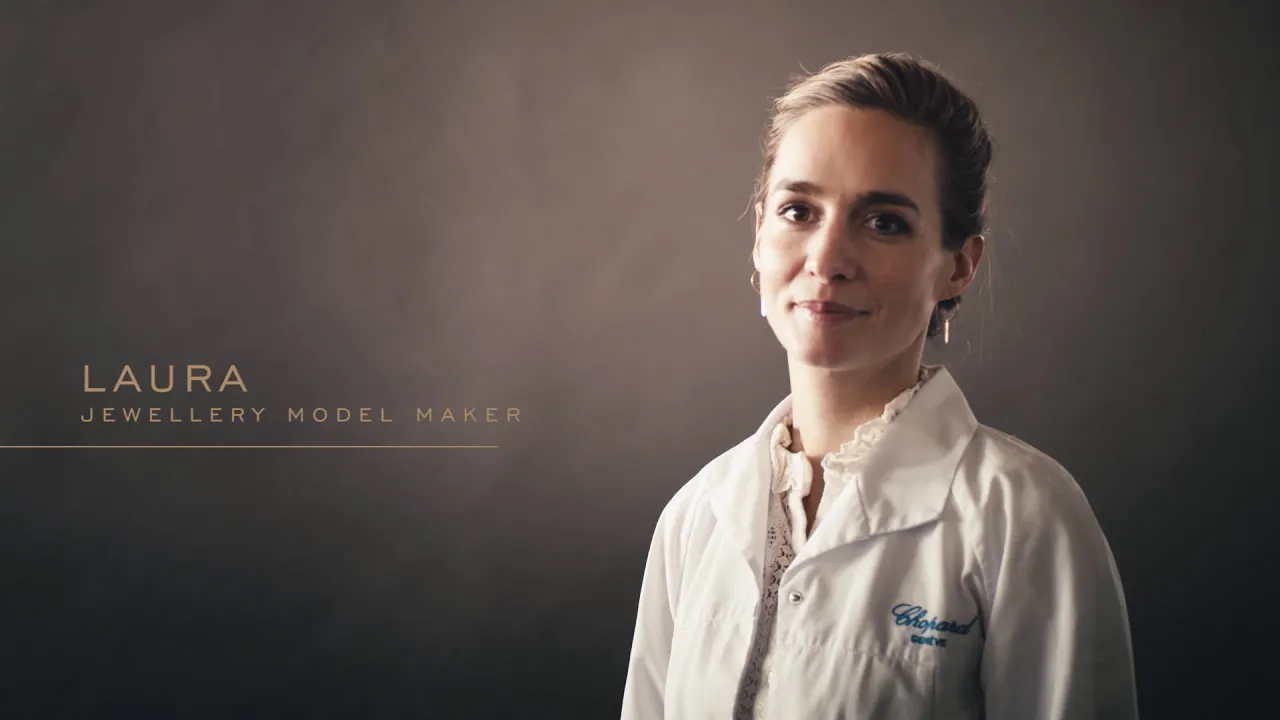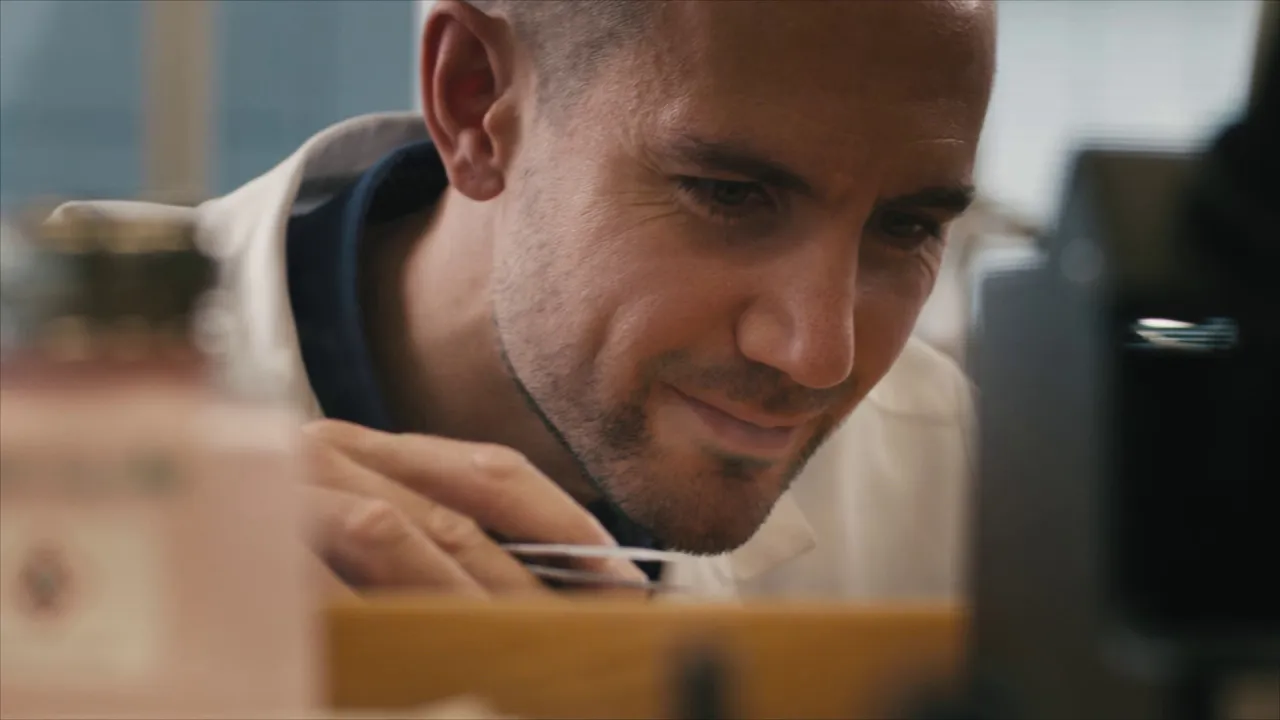Few Maisons can claim complete control of all watchmaking and jewellery professions. Chopard is one of these select few. Thanks to its skilful Artisans, experts in their respective fields, Chopard workshops are home to a full range of talents giving rise to the most complex watches and the most extraordinary jewellery. Today we present you the Design drafting Artisans and the Jewellery model-making Artisans.
Jean-Claude and Mo: Design drafting Artisans
The future jewel is sketched in the designers’ workshop
At Chopard, a piece of jewellery is an accomplishment. It is born of emotion, intuition, desire, and little by little, one operation after another, artistic men and women, like Jean-Claude and Mo, both design drafting Artisans at Chopard since 2001 and 2011, transform this idea into a jewel of unique beauty. There is so much know-how involved in creating jewellery! It is a symphony where everyone plays the same score, but with different instruments, the first of which is the pencil.

Before a model can come to life, it must be transferred from the virtuality of thought to matter, from an idea to its two-dimensional expression. The whole process begins with a drawing, the first graphic representation of a jewel to come. Like an architect’s plan, it serves as a reference document for all the craftsmen who work on the jewel.

A piece of jewellery is first born in Caroline Scheufele’s mind. The co-president of Chopard takes sole responsibility for dreaming up a collection, a jewellery set, a one-of-a-kind model, a special order. She submits her ideas and her sketches to Jean-Claude and Mo, often entering their offices bearing precious stones with which she has fallen in love, but it is up to them to figure out the best way to pay tribute to these exquisite precious gems.

The design drafting Artisans exercise their craft in the designer’s workshop. There is always a creation in progress at Chopard, a wonder in the making. Several stories are being told at the same time. The only requirement is that these stories must be filled with emotion!
The first phase is the sketch. Once the shape has been approved, the drawing is inked and then coloured – often with a Pantone felt pen, crayons or watercolours – and everything is enhanced with gouache painting to give it more light. Depending on what the design drafting Artisan wishes to express, on where he wants to place the emphasis, several techniques may sometimes be used in the same drawing. A felt pen will not convey the same message as a crayon and the shade will be more strongly defined, while watercolour will add a certain sense of transparency.

The most precious and difficult technique to master is gouache painting. It is a delicate wash painting technique which is in itself a work of art: a still life that aspires to true life. The process starts with a sketch, which is reworked and rethought several times, before being approved and then gouache painted. The artist who created the drawing also does the gouache painting and follows-up on the project all the way through subsequent ateliers.

A piece of jewellery is always represented on a 1:1 scale and it is assumed that the light comes from the left, at a 45-degree angle. It is the rendering of light that gives the illusion of the third dimension. The shading is first done using a black pencil before washing. Applying the alternating areas of shade and light creates the illusion of volume, while colouring provides indications regarding the materials used – the colour of gold, the nature of the precious stones, their size, etc.

Lined up on one of the workshop walls, large tan leather-bound works contain the original gouache paintings of previous collections, including several volumes dedicated to the Maison’s 150th anniversary collection. Like portraits of a jewel, these miniature paintings are carefully preserved, protected from the light. “Drawing is a charm offensive,” says Mo, eloquently hinting at the power of the treasures contained in these fascinating tomes. “Drawing is my language, my way of expressing myself. The emotion I feel when my hand has finally succeeded in accurately translating the idea that I have in mind is indescribable” adds Jean-Claude.
Laura and Anthony: Jewellery model-making Artisans
Sculptors of wonders

3D construction technology has saved jewellers valuable time, yet however accurate this technique, it will never instil any sense of soul into a jewellery scale model. Achieving that requires human intervention, a skilled touch and the emotions of the artisan. Laura, jewellery-model maker, and Anthony, jeweller sculptor, are among the Artisans for whom a model is above all the result of an aesthetic quest.

In the Chopard Haute Joaillerie workshops, one particular profession belongs to the art of sculpture: that of the jewellery model Artisan. They transform a drawing – an idea expressed in two dimensions – in order to give it a shape, a 3D existence, whether in wax or metal. In addition to being talented artists, Laura and Anthony master the history of jewellery, having learned to draw, sculpt and place shade and light in such a way as to decipher the gouache paintings provided as the starting point.

It all starts with the gouache painting of which the jeweller makes a photocopy. For Laura, a jewellery model-maker at Chopard since 2018, this photocopy is glued onto a plate made of tin, an extremely malleable metal. She then cuts out the shapes using jeweller’s tools: a tiny hand saw, files, milling cutters and a soldering iron. Then comes the actual construction of the jewel. The shadows enable the artist to imagine the jewel in terms of volume, a process that necessarily involves an interpretative element.

Once this miniature artwork is approved, it becomes a prototype that is entrusted to the 3D construction department for scanning and printing. Laura can then at last add colour to the model, set it with non-precious stones in order to create a realistic appearance, make it shine, bring it to life and reveal all the hidden treasures not necessarily visible on the drawing. These models are part of the heritage of the Maison and are carefully preserved. Laura explains: “As a child, I loved nothing more than drawing and playing with the tools in my grandfather’s workshop. This unique apprenticeship taught me to recognise beauty, a skill which today enables me to reveal the magic that lies within us all, and that we too often forget.”

When a sculpture is made of wax, thanks to Anthony’s mastery – jeweller sculptor since 2006 – it will be used for lost wax casting. This tiny wonder will have had only a limited life span, transitioning from approval to melting and then giving way to an identical precious metal reproduction – in an approach subtly recalling the art of alchemy. As Anthony says: “As a sculptor of Haute Joaillerie design, my job is to bring an idea, a drawing, a stone or a theme to life. It is an endless search, totally in harmony with my passion to work with my hands. Even though some creations require extensive input, they are worth every second spent on the quest for perfection. When one own’s a magnificent piece of jewellery, it contains not only a part of ourselves, but the influence of the person who crafted it as well, making it a kind of extra-special talisman.”

Each of these Artisans brings a sense of soul and years of experience to the model. Sight and touch inform these Artisans that the shape has reached aesthetic perfection. This volume makes it possible to verify the feasibility of the project and anything that may require modification. A piece of jewellery is a constantly evolving work of art, which involves around 30 gifted Artisans from the original sketch to the end result.




















































































